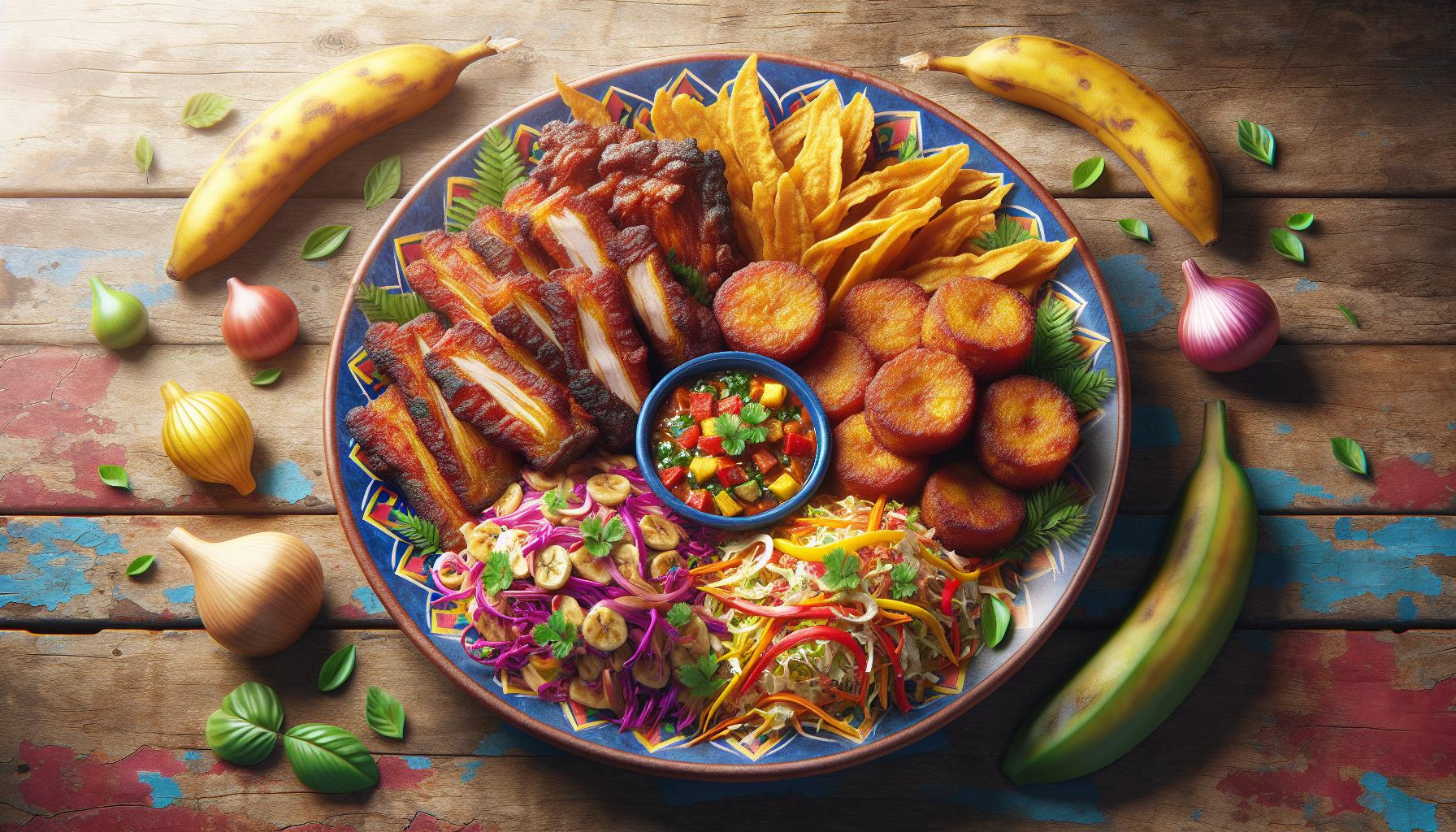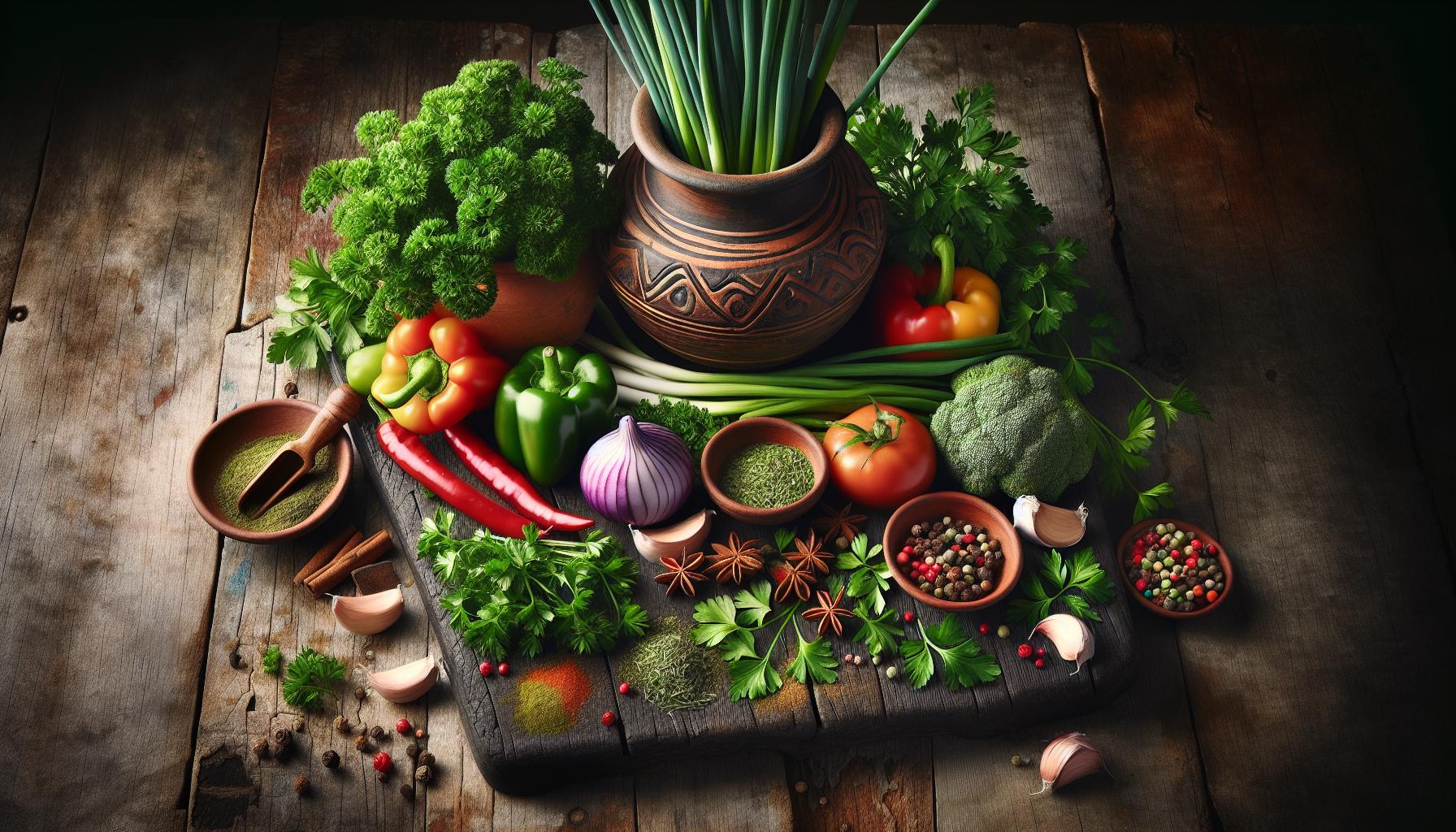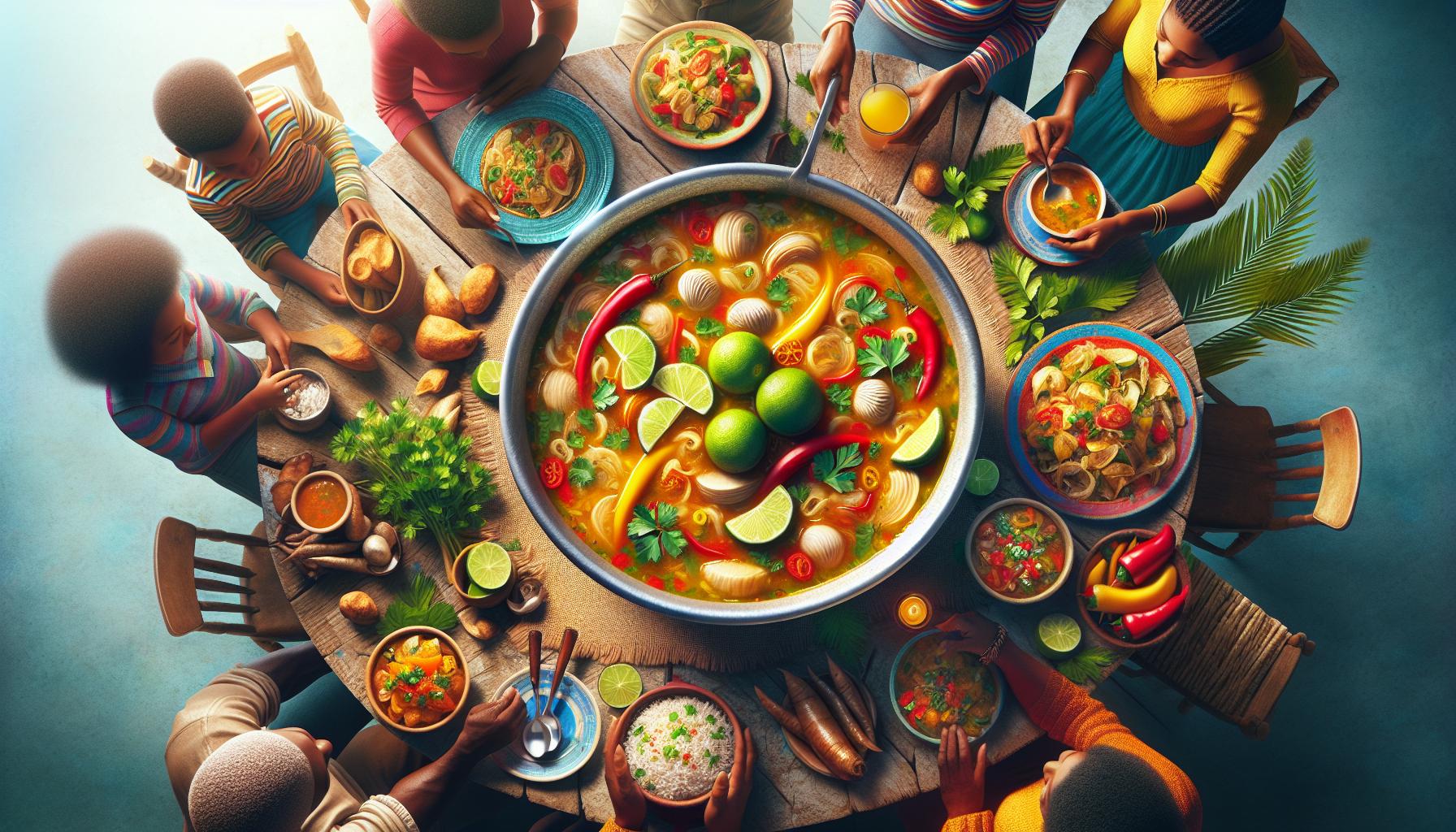Traditional Haitian cuisine tells a vibrant story of resilience survival and cultural fusion. From the aromatic spices of West Africa to the culinary influences of French colonizers this Caribbean nation’s food reflects its rich historical tapestry that spans centuries of tradition.
At the heart of Haitian food culture lies a commitment to bold flavors and communal dining. Every dish serves as a testament to the country’s resourcefulness with recipes passed down through generations. Whether it’s the iconic griot (fried pork) or the beloved soup joumou (pumpkin soup) – a symbol of Haiti’s independence – these dishes do more than satisfy hunger they celebrate freedom and cultural identity.
Food Haitian Culture
Haitian cuisine represents a vibrant tapestry of flavors shaped by centuries of cultural exchange. The fusion of indigenous Taíno techniques with African culinary traditions creates distinctive cooking methods unique to Haiti.
Historical Influences on Haitian Food
Haiti’s culinary landscape emerged from the convergence of multiple cultures in the Caribbean. African enslaved people introduced cooking techniques like slow-simmering stews along with ingredients such as okra, pigeon peas and plantains. French colonization contributed sophisticated cooking methods including the use of herbs and spices like thyme, parsley and cloves. The Spanish occupation brought citrus fruits, livestock and rice cultivation techniques. Indigenous Taíno contributions include the use of root vegetables like yuca and sweet potatoes, plus cooking methods such as barbecuing and smoking meats. These diverse influences created signature dishes like griot (fried pork) and sauce ti-malice (spicy citrus sauce).
Cultural Significance of Meals
Haitian meals symbolize more than sustenance in the local culture. Communal dining practices strengthen family bonds through shared plates and conversations. Special occasions feature ritual dishes like soup joumou (pumpkin soup) served on Independence Day to commemorate Haiti’s liberation. Religious ceremonies incorporate specific foods like cornmeal-based tchaka during Vodou celebrations. Market women known as Madan Sara play an essential role in food distribution, connecting rural farmers with urban communities. The preparation of traditional dishes passes down ancestral knowledge between generations, preserving cultural identity through recipes and cooking techniques.
Traditional Haitian Staple Dishes

Traditional Haitian cuisine centers around hearty, flavorful dishes that reflect the country’s cultural heritage. These staple foods incorporate local ingredients with cooking techniques passed down through generations.
Rice and Beans (Diri ak Pwa)
Diri ak Pwa stands as the cornerstone of Haitian cuisine, featuring perfectly cooked rice paired with savory black or red beans. The beans simmer with epis, a aromatic seasoning base containing garlic, thyme, parsley, scotch bonnet peppers, and cloves. This dish often includes a protein-rich sauce made from coconut milk, creating a creamy texture that coats each grain of rice. Fresh herbs like thyme and parsley add depth to the flavor profile, while scotch bonnet peppers provide a subtle heat that distinguishes Haitian rice and beans from other Caribbean variations.
Griyo and Banann Peze
Griyo, Haiti’s national dish, consists of cubed pork shoulder marinated in sour orange juice and seasoned with scotch bonnet peppers. The meat undergoes a two-step cooking process: boiling until tender, then frying until crispy brown. Banann peze, twice-fried green plantains, serves as the traditional accompaniment. These plantains are flattened between fryings to create a crispy exterior while maintaining a soft interior. Local markets serve this combination with pikliz, a spicy cabbage slaw that cuts through the richness of the fried elements. Griyo and banann peze appear at celebrations, family gatherings, and roadside stands throughout Haiti.
Haitian Spices and Seasoning Blends

Haitian cuisine’s distinctive flavors come from carefully crafted spice combinations and aromatic seasoning blends. These traditional mixtures incorporate fresh herbs, garlic, peppers, and other aromatics to create depth in every dish.
Epis: The Heart of Haitian Flavor
Epis forms the foundation of Haitian cooking as a concentrated herb and garlic paste that seasons most traditional dishes. This vibrant green seasoning blend combines parsley, thyme, scallions, garlic, onions, bell peppers, celery, and cloves. Haitian cooks prepare epis in large batches, storing it in glass jars in the refrigerator for up to 3 weeks.
Key ingredients in traditional epis include:
- Fresh parsley (both flat-leaf and curly)
- Green onions (whole stalks)
- Garlic cloves (6-8 per cup)
- Bell peppers (green and red)
- Fresh thyme sprigs
- White onions
- Whole cloves
Regional variations add:
- Scotch bonnet peppers
- Fresh citrus juice
- Apple cider vinegar
- Olive oil
- Fresh cilantro
- Marinades for meat
- Rice dishes
- Bean stews
- Seafood preparations
- Vegetable dishes
Celebratory Foods and Special Occasions

Haitian celebrations center around elaborate feasts that bring families together to honor traditions passed down through generations. These gatherings feature specific dishes that carry deep cultural significance marking holidays religious ceremonies special events.
Holiday Food Traditions
Traditional Haitian holiday celebrations showcase distinctive dishes for Christmas New Year’s Easter. Christmas feasts feature pen patat (sweet potato pudding) marinad (fried savory dough) lalo (stewed jute leaves). New Year’s celebrations include offerings like pwason gwo sèl (salted fish) diri ak djon djon (black mushroom rice) zaboka (avocado salad). Easter meals highlight lanbi an sòs (conch in sauce) poule an sòs (stewed chicken) legim (vegetable stew). Religious ceremonies like Fèt Gede incorporate specialties such as black coffee cassava bread yam dishes to honor ancestors.
Soup Joumou and Independence Day
Soup joumou stands as Haiti’s most iconic celebratory dish served every January 1 to commemorate independence from France in 1804. This hearty pumpkin soup combines beef marrow bones Caribbean squash root vegetables pasta. The soup carries profound symbolism as it represents freedom from colonial rule – enslaved Haitians were forbidden from consuming this dish reserved exclusively for French colonizers. Modern Independence Day celebrations feature families gathering at sunrise to share bowls of steaming soup joumou garnished with fresh parsley lime wedges crusty bread. Local variations incorporate regional ingredients like malanga yams watercress while maintaining the signature golden color rich texture.
Modern Influences on Haitian Cuisine
Haitian cuisine continues to evolve through global influences while maintaining its traditional roots. Contemporary Haitian food reflects adaptations to changing lifestyles, international ingredients accessibility and culinary innovation.
Diaspora Impact on Food Culture
The Haitian diaspora has transformed traditional recipes by incorporating ingredients from their adopted countries. Haitian-Americans in Miami blend local seafood into classic dishes, creating fusion recipes like mango-glazed griot or coconut curry lanbi. Communities in Montreal integrate seasonal Canadian produce into traditional soups and stews, while maintaining authentic cooking techniques. Large diaspora populations in New York City have established food businesses that combine Haitian flavors with urban food trends, introducing items like pikliz-topped burgers or griyo tacos. Social media platforms enable Haitian food enthusiasts worldwide to share recipe modifications, cooking tips and virtual cooking demonstrations, fostering a dynamic exchange of culinary ideas across borders. These adaptations reflect the resilience of Haitian cuisine while embracing new cultural contexts.
| Diaspora Location | Popular Fusion Dishes |
|---|---|
| Miami | Mango-glazed griot |
| Montreal | Seasonal vegetable joumou |
| New York | Pikliz burger, Griyo tacos |
Food Customs and Dining Etiquette
Haitian dining customs emphasize respect through specific seating arrangements at mealtimes. Elders receive their food first, followed by adults then children. Family members gather around a central table, creating an intimate atmosphere for sharing meals.
Traditional Haitian dining practices incorporate these essential customs:
- Washing hands before meals in a designated basin called a ‘bol’
- Waiting for the eldest person to begin eating
- Using the right hand for eating when utensils aren’t present
- Keeping elbows off the table during meals
- Speaking quietly while dining
Meal presentation follows distinct cultural protocols:
- Main dishes occupy the center of the table
- Side dishes arrange in a circular pattern
- Condiments like pikliz sit within easy reach
- Water pitchers remain accessible to all diners
- Individual portions get served by the host
Dining times in Haiti follow a consistent schedule:
| Meal | Typical Time | Common Features |
|---|---|---|
| Breakfast | 7-8 AM | Light meal with coffee |
| Lunch | 1-2 PM | Main meal of the day |
| Dinner | 7-8 PM | Lighter than lunch |
Guest etiquette includes accepting second helpings as a sign of appreciation. Hosts demonstrate hospitality by offering the best portions to visitors. Leaving a small amount of food on the plate signals satisfaction with the meal.
Social conversations during meals focus on positive topics. Politics religion discussions remain limited at the dining table. Expressing gratitude to the cook through compliments demonstrates proper dining manners.
Nourish Future Generations
Haitian cuisine stands as a powerful testament to the nation’s rich cultural heritage resilience and vibrant spirit. Through carefully crafted dishes and time-honored traditions food serves as a bridge connecting past and present generations while fostering strong community bonds.
The unique blend of African French and indigenous influences has created a culinary tapestry that continues to evolve while maintaining its authentic roots. Whether enjoyed during daily meals or special celebrations Haitian food remains a vital expression of cultural identity both within Haiti and throughout its global diaspora.
Today’s Haitian cuisine proves that traditional flavors can adapt and thrive in modern settings without losing their essential character. It’s this remarkable ability to preserve tradition while embracing change that ensures Haiti’s culinary legacy will continue to inspire and nourish future generations.

